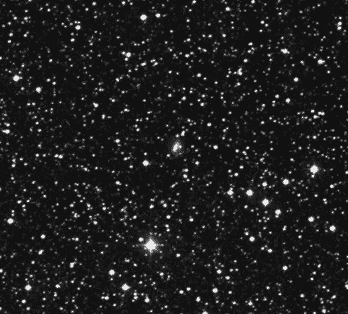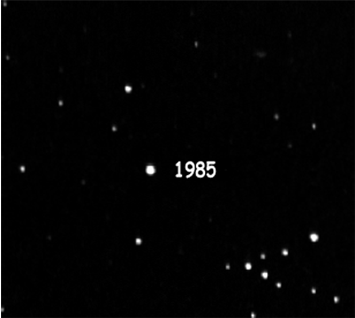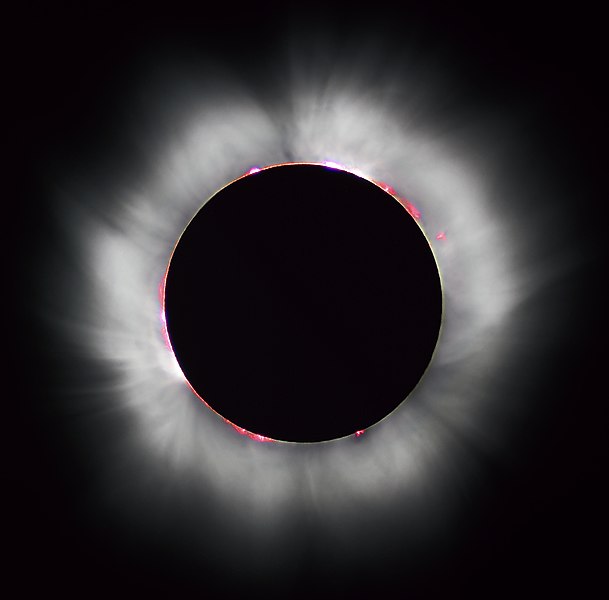Had to take that graph out, was messing it up.
Your misconception lies in your reasoning. Quasar's are the most distant to us (say astronomers) and therefore the oldest thing we can observe, looking back in time. Therefore we are further away from the source of the BB, then the quasar we look back in time to see, 14 billion years ago, when it had no choice but to be closer. Otherwise it would be furthest from this source, and we would have to look into the future to see it. To be further, this quasar would had to have caught up to us and passed us, making its present speed but a fraction of what it should be if current theory is correct regarding the age of the universe. But they insist it is still accelerating, So it had to have been slower in the past, and the time required for it to reach its present (claimed) distance would not be sufficient. A distance that is supposed to be 14 billion years ago, just after the BB. Which then requires our galaxy to have reached its present distance before the quasar. Unless of course everything was expanding away from the earth, and we are the center of the universe, but that's silly, but, everywhere we look it is claimed quasar's are accelerating away from us. So I expect it's your theories about quasar's that are wrong, and the Earth is NOT the center of the universe. But such is what redshift = distance requires, that everywhere we look a quasar is accelerating away from us at fractions of c. Unless again it is your theories on quasar's that are wrong. After all, no matter which direction we look, we see 14 billion years into the past, so the start must be exactly where we are. Unless once again, those theories are incorrect. I thought we did away with an earth centered universe ages ago?
Both theories by mainstream to explain this oppose each other:
Fingers of God - Wikipedia, the free encyclopedia
Such little explanation by mainstream for such a profound observance, a gloss-over. Explanation that don't really explain. It's the entire red shift = distance that leads to inaccuracies of measurements.
But the real explanation lies elsewhere:
FingersofGod in an ExpandingUniverse - Halton Arp's official website
Halton Arp, a Modern Day Galileo
But wait, am sure someone can come up with a Dark Matter cause.
Modern Statistical Methods for Astronomy: With R Applications - Eric D. Feigelson, G. Jogesh Babu - Google Books
Yep, we got that too, wouldn't you know that one would come in sooner or later.
So you can see where theories can go dreaming that we are the center of the universe. Fascinating theories, to be sure, but taken on the whole is in reality no less valid than Dark Matter, Dark Energy, Black Holes, Neutron Stars, all the Fairie Dust of mainstream cosmology. The largest fallacy is the Big Bang, as if once again all things point to a common center. Of course the Big Bang theory arose from the study of quasar's and the incorrect assumption of red shift. This study has led you to the conclusion that all galaxies are expanding away from one another, as if they were stuck on the 2D surface of a balloon. Space, I am sad to say, is 3 dimensional. That means that no matter where you gaze into the sky, left, right, up, down, backwards or forwards, you see galaxies. If you are expanding outward on the balloon analogy, then looking towards the source of the explosion you see quasar's accelerating TOWARDS the source, not AWAY, since you believe red shift = distance. And this theory makes our Sun the source since all are actually accelerating AWAY from us, preposterous!
But such are fascinating theories claiming these things, to which a reasonable person would agree. One just need play the Devil's Advocate now and then to get those to see how preposterous are theories implying our Sun is the center. Yet that is what red shift = distance requires one to believe. So, if quasar's are all accelerating away from our galaxy, and almost all other galaxies are moving away from us but a few, well, explosions go outward.
Or we can theorize that since plasma red shift has been duplicated in the laboratory, the features on the Sun and Planets have been duplicated in the laboratory with plasma and electric currents, and since 99.99% of the universe is plasma: that red shift is caused by youth of a new formed galaxy, caused by ejection from the parent galaxy, which is ALWAYS an active galaxy. Even your Black Holes eject matter millions of light years into space. In all cases the further they are from the parent galaxy, the lower their red shift becomes. The more they go from quasar's to BL Lac objects and eventually form into smaller galaxies as they draw in the plasma from space and their red shift lessens.
Hubble himself stated many times: It seems likely that redshift may not be due to an expanding Universe, and much of the speculations on the structure of the universe may require re-examination
We may predict with confidence that the 200-inch will tell us whether the red-shifts must be accepted as evidence of a rapidly expanding Universe, or attributed to some new principle of nature. (Publications of the Astronomical Society of the Pacific Vol. 59, No. 349).
And lo and behold, the 200-inch telescope did indeed tell us whether the red-shifts must be accepted as evidence of a rapidly expanding Universe, or attributed to some new principle of nature. Halton Arp found quasars in connection with their parent galaxies. But you ignored Hubble and his assistant Halton Arp.
Halton Arp was the lone voice among a crowd of scientists who conformed to the standard Big Bang model when he began to publish papers that did not demonstrate that inflationor the Big Bang hypothesiswas valid. As Edwin Hubble predicted, Arps research using the 200-inch Hale reflector demonstrated some new principle of nature. For daring to question he was denied access to any telescope in the US, this is how science treats those who might question the proposed model.
And now with the Hubble Space Telescope we not only see the bridge linking the two clearly, but also observe two other quasars embedded inside this filament. That one might be chance alignment but that 4 are is astronomically impossible.
NGC 7603
Origins of Quasars and Galaxy Clusters - Halton Arp's official website
So yes, some theories are fascinating indeed, but like you I am sure there is some other cause for red shift that leads to the conclusion our Sun is the center of the Big Bang, since your WMAP data shows the source is all around us, exactly what one would observe if gazing out at the light coming back from the expanding cloud from the initial event. Preposterous!
If we were on the balloon edge, then in some directions left/right, would be denser. Up/Down would be slightly less dense. Forward would be less dense and backwards towards the source even less, as you must see the light from the same expanding diameter on the other side of the source. But WMAP shows only slight variations, leaving one with no conclusion but we are the center, the point source of the Big Bang. This is what your red shift equals distance has led you to. Fascinating theories yes, but really?





